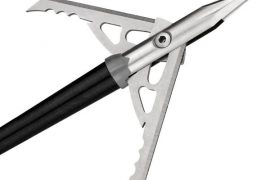Bowhunting has experienced explosive growth over the last three decades. An important part of the sport’s maturation has been the innovation of archery products. Here are the ten most important inventions that have helped bow hunters become more successful in the field.
Bowhunting would not have achieved its popularity without the invention of the compound bow. Modern compounds are astounding feats of mechanical engineering and materials science. However, the first “compound” was kludged together by Holless Wilbur Allen in his Missouri garage in the mid-1960’s. Allen’s contraption was longbow with the limb tips lopped off and pulleys lashed to the limbs. While crude, this compound would serve as the blueprint for all future compounds. From its meager beginnings in a tinkerer’s cluttered workspace, the compound bow has morphed into a stealthy and swift machine. A machine capable of tightly clustering arrows at long distances.
Early bow hunters milled about the ground for centuries, spot-and-stalking game while hiding behind bushes and rocks. “Climbers” were introduced to ground-bound hunters in 1969, when James Baker and Fred Walters were issued a patent for their revolutionary climbing treestand. Almost overnight, bow hunters everywhere were “going mobile.” However, these original climbers were woefully unsafe. As injuries mounted, full body fall arrest harnesses were introduced by the late 1990’s—saving countless lives. Today’s stands are alloy-light and whisper quiet. Hunters now safely climb in comfort to nose bleed heights, able to adapt as the hunt and season dictates.
As compound and crossbow performance has improved logarithmically over the last decade, so have shot distances increased. As such, bowhunters must rely on specialized equipment to relay critical target distance data in order to make ethical shots. Today’s laser rangefinders are hyper-precision pieces of sophisticated, must-have electronic hunting gear. Modern rangefinders take the work out of ranging a target while calculating inclination angles and shot angle when arriving at target distances. Leave home without one in your pack and you’ll increase your chances of a painful miss.
In 1993, Paul LoRocco applied for a U.S. Patent entitled “Sight Pin and Holder for Archery Bow.” His invention, the fiber optic compound bow sight, would change the game for bowhunters. Back in the day, archery sights used solid brass pins. These were often painted with glow-in-the-dark paint. These crude aiming devices caused plenty of misses. Mr. LoRocco’s invention, utilized small lengths of annealed fiber optic cable to gather and transmit light. These new “sight pins” glowed…





